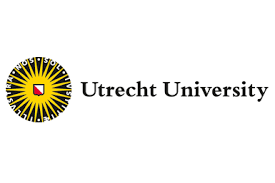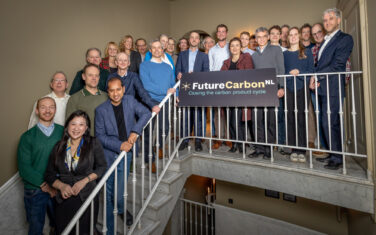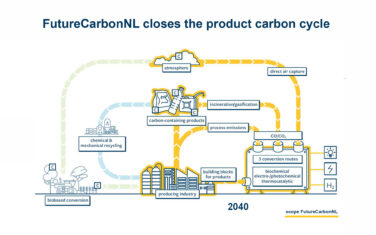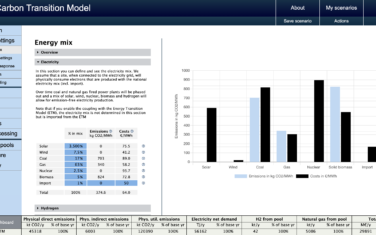In the transition of the fossil-intensive industry, everything comes together: transformation of your own site and value chain, dependence on infrastructure and clean energy, and long term global developments. Which options do you have to reduce emissions and secure future (carbon) feedstock and energy supply? And to which extend is a company dependent on the decisions of others? How to arrive at the right decision about strategic future investments? By connecting companies in supply chains (or industrial clusters) to other stakeholders like grid operators, visions on future industry portfolio’s can be explored.
In short:
- The Carbon Transition Model is a simulation model
- It is used to explore in which ways emissions can be reduced and carbon circularity can be realised
- The model provides a common understanding of the current situation and possible future situations
- The model is fact-based and publically available
Let’s explain CTM
Reducing carbon emissions: how to get a grip?
Currently, companies and industry clusters individually develop strategic plans on how they could reduce carbon emissions. Most of these plans have included a limited scope and focus on a small part of a large industrial system. However, without putting the individual plans and specific technology developments in the perspective of a regional or (inter)national, interconnected industrial system, we’re setting ourselves up for failure.
We need a shared insight into the interdependencies and possible synergies in the complex transition of companies and industry clusters, and into the requirements of these transitions for the supporting infrastructure.
For that purpose, the Carbon Transition Model (CTM) is being built that connects to the need for shared understanding of the associated constraints, dependencies and opportunities. Only in such a system-in-transition context we can get a better grip on carbon emission reduction and safeguarding future supply of (carbon) feedstock and energy .
CTM maps out raw material, energy and emission flows
The Carbon Transition Model maps out raw material, energy and emission flows, and explores how these change with the different transition options that companies have. It is a transparent, fact-based, publicly available model that provides a common framework, understanding and language of the current situation and possible future industry portfolio’s towards 2030 and 2050.
CTM starts a dialogue
In ongoing dialogues, government, energy sector, industry and society are exploring the possible routes to a circular and carbon-neutral process industry. At ISPT, we believe that this dialogue can only be successful if everyone has the same information, has an overview of the total system and knows what the alternative routes are.
We believe to be successful when the Carbon Transition Model is used by decision makers in government, industry, energy and society as a decision support tool for realizing a just industry transition and meeting emissions targets.
Partners
The tool has been developed together with a number of industrial partners, who have helped with validating the modelling and underlying data. But also the grid companies, an NGO and knowledge institutes are participating in the development.
They explain the added value of the Carbon Transition Model in their own words:
How can CTM help your company?
The CTM is publically available, please visit Carbon Transition Model or contact Geoffrey Schouten.
Good to know
- The Carbon Transition Model is part of the Rekenkamer van de Industrie
- Key climate and energy targets by EU
- During the ISPT Conference ’22 participants experimented with CTM and a brief summary of the findings were given on: What should Tata Steel focus on in 2030? These are the results.
You might also be interested in
Articles / Publications
Acknowledgement & partners

























